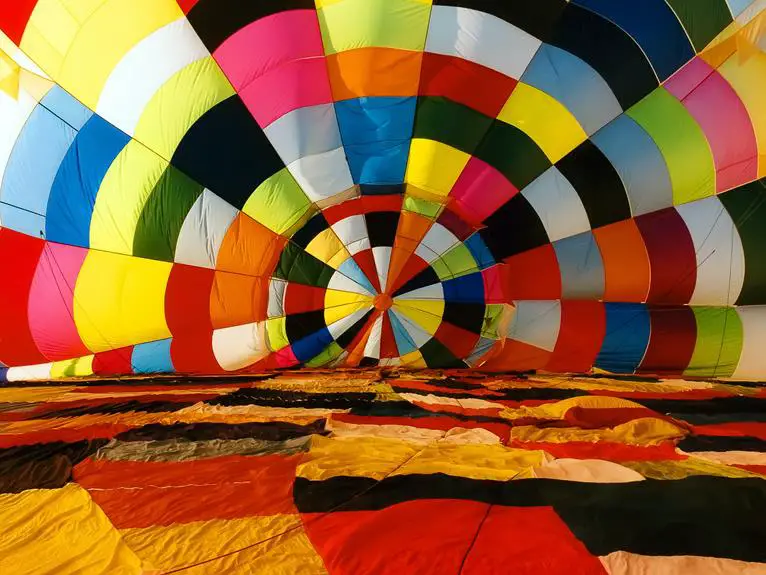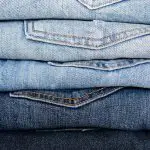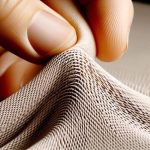If you've ever wondered which fabric reigns supreme in the world of textiles, then look no further. In the debate of nylon vs viscose fabrics, there are several key factors to consider in order to determine the better option for your needs.
From composition and properties to durability and comfort, each fabric has its own unique set of advantages and disadvantages. By delving into the intricate details of these two materials, you can gain a comprehensive understanding of their differences and make an informed decision about which one suits your requirements best.
So, let's explore the nuanced characteristics of nylon and viscose fabrics to unravel the mystery of which one comes out on top.
Key Takeaways
- Nylon is a synthetic polymer composed of long-chain polyamides, while viscose is a semi-synthetic fiber derived from natural sources like wood pulp or cotton linters.
- Nylon is strong and durable, making it suitable for water-resistant garments like activewear or outerwear, while viscose has a more natural feel and drape.
- Nylon fabric offers greater strength and durability compared to viscose, with a higher tensile strength and resistance to abrasion.
- Nylon fabrics tend to have a longer lifespan than viscose, while viscose is prone to pilling and can be less durable over time.
Composition and Properties
When considering the composition and properties of nylon and viscose fabrics, you'll find that they each have distinct characteristics that make them suitable for different uses. Nylon, a synthetic polymer, is composed of long-chain polyamides, making it incredibly strong and durable. On the other hand, viscose, also known as rayon, is a semi-synthetic fiber derived from natural sources such as wood pulp or cotton linters. This gives viscose a more natural feel and drape compared to nylon.
In terms of moisture absorption, viscose outperforms nylon. Viscose has excellent moisture-wicking properties, making it ideal for clothing that needs to keep the skin dry. It can absorb perspiration and wick it away from the skin, keeping the wearer comfortable. Conversely, nylon isn't as effective in moisture absorption, making it more suitable for garments that require water-resistance, such as activewear or outerwear.
Understanding the composition comparison and moisture absorption properties of nylon and viscose fabrics is crucial in selecting the right material for specific applications. Whether it's for durability or moisture management, each fabric has its unique strengths that cater to different needs.
Durability and Longevity
When it comes to durability and longevity, you may be wondering about the strength of nylon versus viscose. Understanding the wear and tear comparison between the two fabrics can help you make an informed decision.
Additionally, considering the lifespan and maintenance requirements of nylon and viscose will play a crucial role in determining which fabric suits your needs best.
Nylon Strength Vs Viscose
You'll find that nylon fabric offers greater strength and durability compared to viscose, making it a more long-lasting option for various applications.
When comparing the strength and durability of nylon and viscose fabrics, several key factors come into play:
- Tensile Strength: Nylon has a higher tensile strength than viscose, meaning it can withstand greater pulling force without breaking or tearing.
- Abrasion Resistance: Nylon is highly resistant to abrasion, making it suitable for items that undergo frequent wear and tear, such as activewear and outdoor gear.
- Longevity: Due to its robust nature, nylon fabrics tend to have a longer lifespan than viscose, making them a more reliable choice for durable and long-lasting products.
These factors collectively contribute to nylon's superior strength and durability compared to viscose, making it a preferred option in many practical applications.
Wear and Tear Comparison
For assessing durability and longevity, compare the wear and tear resistance of nylon and viscose fabrics.
Nylon is known for its resilience, making it highly resistant to abrasion and wear. Its strong and durable nature allows it to withstand frequent use and washing without losing its shape or integrity.
On the other hand, viscose is prone to pilling, especially in areas of friction, which can detract from its overall appearance and longevity. Additionally, viscose tends to absorb moisture more readily than nylon, which can impact its elasticity and durability over time.
When considering wear and tear, nylon emerges as the more durable choice due to its resilience and ability to maintain its quality despite frequent use and washing, making it a reliable option for long-lasting garments.
Lifespan and Maintenance
To maximize the lifespan and maintain the durability and longevity of nylon and viscose fabrics, proper care and attention are essential. When comparing the lifespan of nylon and viscose fabrics, it's important to consider the maintenance requirements for each material:
- Cleaning: Regularly clean nylon fabrics to remove dirt and stains, while viscose fabrics require gentle hand washing or dry cleaning to maintain their integrity.
- Drying: Nylon fabrics should be air-dried to prevent damage, whereas viscose fabrics are best dried flat to avoid stretching.
- Storage: Store nylon fabrics in a cool, dry place to prevent mildew, and store viscose fabrics in breathable bags to prevent moisture retention.
Understanding these maintenance requirements can significantly impact the lifespan and durability of nylon and viscose fabrics, helping you make the most of your investment.
Comfort and Wearability
Achieving comfort and wearability with nylon and viscose fabrics depends on their unique properties and your personal preferences.
Nylon, known for its durability and strength, may not be as breathable as viscose. However, it can offer excellent moisture-wicking properties, making it suitable for activewear.
On the other hand, viscose, also known as rayon, is a highly breathable fabric that drapes well and feels comfortable against the skin. Its moisture-absorbing abilities make it ideal for warm weather.
When it comes to wearability, nylon's resilience and stretch make it a popular choice for garments that require shape retention, such as hosiery and shapewear. Viscose, with its soft and smooth texture, is often favored for flowing dresses and lightweight blouses.
Ultimately, your comfort and wearability preferences will determine the better fabric for you. If breathability and a soft feel are your priorities, viscose may be the optimal choice. However, if durability and moisture management are more important, nylon might be the preferred option.
Environmental Impact
Considering the environmental impact, choosing between nylon and viscose fabrics involves evaluating their production processes and sustainability. Both fabrics have sustainability implications, and understanding their environmental impact can help you make an informed decision.
- Nylon Fabric:
- Nylon production involves the use of petrochemicals, which are non-renewable resources and contribute to greenhouse gas emissions.
- The production of nylon also generates nitrous oxide, a potent greenhouse gas that contributes to global warming.
- The durability of nylon may reduce the frequency of replacement, potentially offsetting some of its environmental impact.
- Viscose Fabric:
- Viscose is derived from plant-based materials such as bamboo, beech trees, or cotton linters, making it a more sustainable option compared to nylon.
- The production of viscose involves chemical processes that can contribute to water pollution if not managed properly.
- The sourcing of raw materials for viscose production can have varying degrees of impact on ecosystems and biodiversity.
In making your choice, it's essential to weigh the environmental impact of both fabrics and consider factors such as resource depletion, emissions, and waste management. Understanding the sustainability implications of nylon and viscose fabrics can guide your decision towards a more eco-conscious choice.
Care and Maintenance
For maintaining both nylon and viscose fabrics, follow a regular cleaning routine to ensure longevity and quality. Proper care and maintenance of these fabrics are essential for preserving their texture and appearance. When washing nylon and viscose fabrics, it's crucial to follow the specific washing instructions to prevent damage and maintain their fabric softness. Here are some general guidelines to help you care for your nylon and viscose garments:
| Care Tips | Nylon | Viscose |
|---|---|---|
| Washing | Hand wash in cold water or machine wash on a gentle cycle | Hand wash in lukewarm water or dry clean |
| Drying | Air dry or tumble dry on low heat | Gently squeeze out excess water and reshape while damp |
| Ironing | Use low heat and a pressing cloth | Iron on low heat with a pressing cloth |
Cost and Affordability
When it comes to deciding between nylon and viscose fabrics, cost and affordability are crucial factors to consider.
You'll want to weigh the durability of nylon against the lower price point of viscose, and also take into account the long-term cost analysis of each option.
Understanding the price comparison and long-term cost implications of these fabrics will help you make an informed decision that aligns with your budget and preferences.
Nylon Durability Vs. Viscose
When comparing nylon durability with the cost and affordability of viscose, you'll notice stark differences between the two fabrics.
- Durability Comparison
- Nylon is highly durable and known for its strength, making it a reliable choice for items that require resilience, such as outdoor gear and hosiery.
- Viscose, while offering a luxurious feel, is less durable than nylon and may not withstand frequent use or rigorous activities as well.
- Fabric Strength
- Nylon's exceptional strength and resilience contribute to its longevity, making it a cost-effective choice over time due to its durability.
- Viscose, although more affordable upfront, may require more frequent replacement due to its lower durability, potentially resulting in higher long-term costs.
In essence, while nylon may initially come with a higher price tag, its superior durability often makes it a more cost-effective option compared to viscose.
Price Comparison: Nylon/Viscose
Nylon and viscose differ significantly in cost and affordability, impacting their suitability for various applications. When it comes to cost comparison, nylon is generally more expensive than viscose. This price difference is due to the production process and the performance characteristics of the fabrics.
Nylon is known for its exceptional durability, resilience, and abrasion resistance, making it a preferred choice for high-wear applications such as activewear and outdoor gear.
On the other hand, viscose offers a more affordable option while still providing a luxurious drape, breathable comfort, and a silk-like aesthetic. Its lower cost makes it a popular choice for casual wear, linings, and home textiles.
Understanding the cost disparities between nylon and viscose is essential for making informed decisions based on specific fabric performance needs and budget considerations.
Long-Term Cost Analysis
To fully evaluate the long-term cost analysis of nylon and viscose fabrics, consider their durability and maintenance requirements.
When making a long term investment in fabric, it's crucial to understand the financial comparison between nylon and viscose. Here's what you need to know:
- Durability: Nylon is known for its exceptional durability, making it a cost-effective choice in the long run as it can withstand heavy wear and tear better than viscose.
- Maintenance Requirements: Viscose fabric requires delicate care and is more prone to damage from moisture, requiring dry cleaning or gentle hand washing. This can result in higher long-term maintenance costs compared to the more resilient nylon.
- Financial Comparison: While nylon may have a higher upfront cost, its durability and lower maintenance needs make it a more cost-effective long-term investment when compared to viscose.
In considering long-term cost, nylon emerges as the more financially prudent choice.
Frequently Asked Questions
Can Viscose Fabric Be Used for Outdoor or Athletic Wear?
Viscose fabric can be suitable for outdoor or athletic wear due to its moisture-wicking and breathability properties. Its dyeing process and ability to hold prints make it versatile. Proper fabric care and preservation techniques are essential.
Are There Any Specific Health Concerns Associated With Wearing Nylon or Viscose Fabrics?
When it comes to health concerns, both nylon and viscose fabrics have their own potential issues. Nylon may cause skin irritation, while viscose can pose environmental impact. It's essential to consider these factors when choosing fabrics.
How Do Nylon and Viscose Fabrics Compare in Terms of Color Fastness and Resistance to Fading?
In terms of color fastness and resistance to fading, nylon generally outperforms viscose. Nylon's strong synthetic fibers hold color well and are less prone to fading, making it a durable choice for vibrant, long-lasting garments.
Can Viscose Fabric Be Easily Dyed or Printed With Designs?
When it comes to fabric printing, viscose fabric offers great absorbency and takes dyes and prints well. However, it's important to consider the dyeing process and its environmental impact. In terms of durability, viscose may have limitations.
Are There Any Special Considerations for Storing or Preserving Nylon or Viscose Fabrics?
When storing nylon or viscose fabrics, keep them in a cool, dry place away from direct sunlight to prevent discoloration and degradation. Use acid-free tissue paper for preservation and avoid hanging viscose items to prevent stretching.
- Recycling Nonwoven Fabrics: Is It Possible? - July 11, 2025
- Recycling Nonwoven Fabrics: Is It Possible? - July 11, 2025
- Recycling Nonwoven Fabrics: Is It Possible? - July 11, 2025







